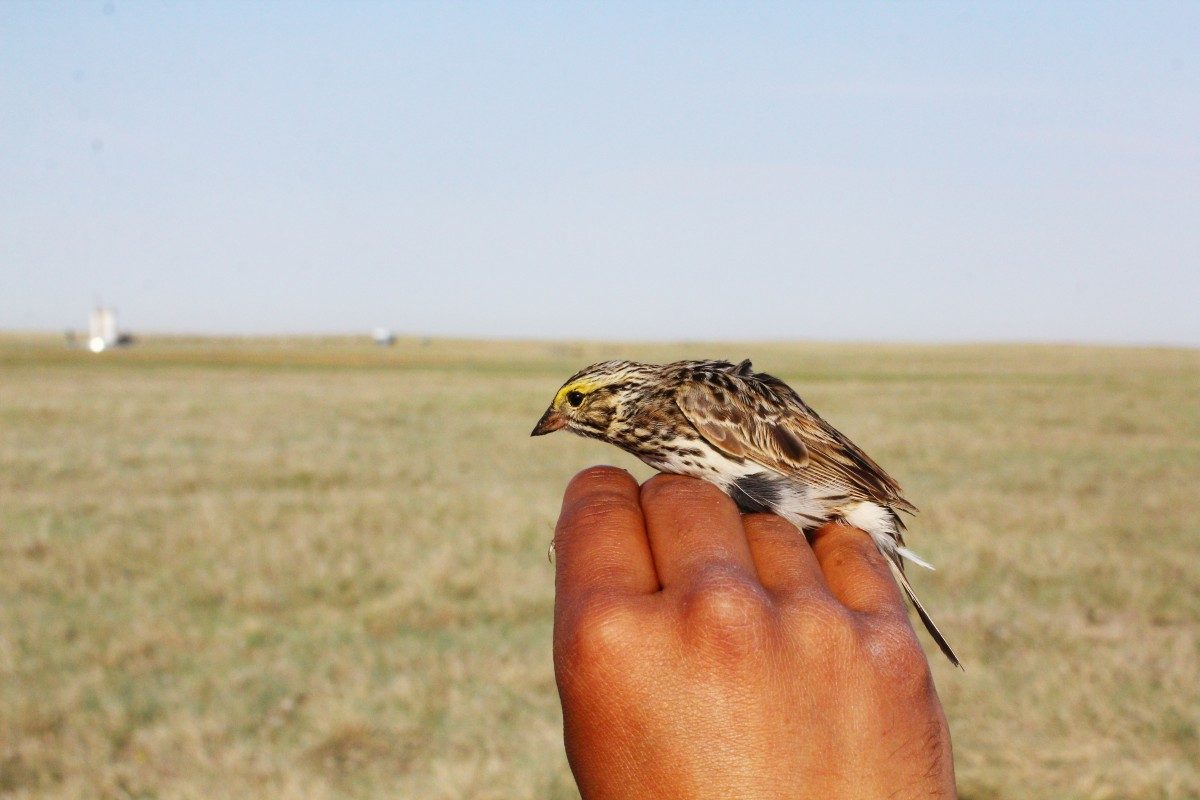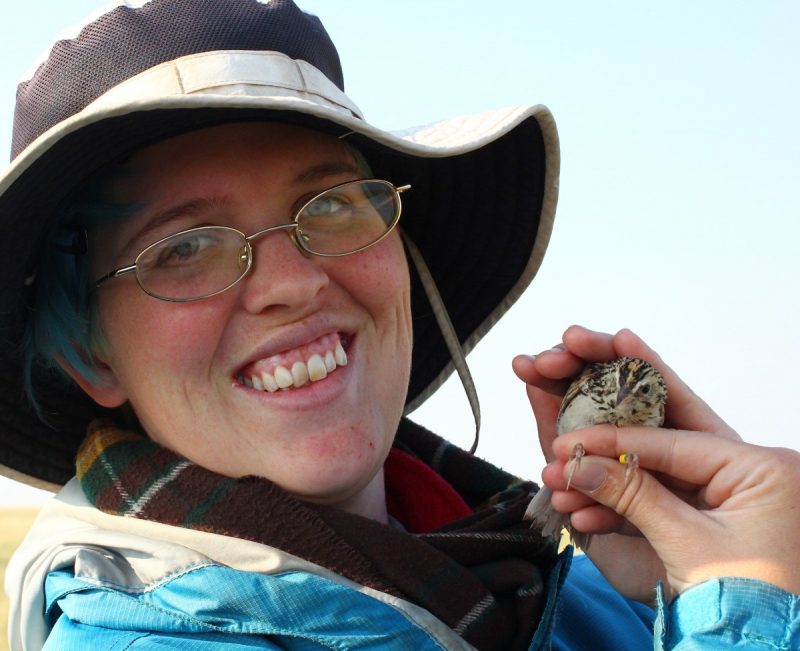
Savannah Sparrow // Photo: Claire Curry
Landmark study reports on new layer of complexity in songbird communication
An update from the songbird file
Some good news: songbirds living near oil and gas fields in Canada’s prairies are indeed able to understand each other over the clamour of machines, an international research team reports.
Back in January 2018, University of Manitoba researchers reported that Canadian songbirds living near loud oil and gas infrastructure are changing their chirps in order to be heard.
Such deft musical adaption fascinated the researchers, but a larger concern was if the new compositions worked: Could these birds still understand what each is trying to say so that they could do things like find mates or face down competitors?
For the most part, they can, but stress takes its toll, the researchers report in “Noise source and individual physiology mediate effectiveness of bird songs adjusted to anthropogenic noise,” published on March 2 in Nature’s “Scientific Reports”.
This is the first known study to compare how well song adjustments allow birds to effectively adapt their songs near different types of human infrastructure, such as different types of oil wells.
“This study shows that altering songs in noisy environments is both necessary and effective. If they don’t change their songs, birds that hear those songs respond the wrong way—so changing the song is necessary to be understood over the noise. But birds that hear the altered songs consistently respond much more appropriately,” says Nicola Koper, a professor in the U of M’s Natural Resources Institute and one of the authors (of this and the previous study). “This might be why Savannah sparrows are able to live along noisy roadways and near human development – they can alter their songs to communicate effectively despite human noise.”
When singing, these sparrows adapt to noise by changing the pitch and volume of notes, but comprehension is trickier and dependent on stress hormones. Near some oil wells, birds that had higher levels of stress hormones made more errors.
“I think of it using the scenario of being a parent with a kid tugging on your arm saying, ‘MOM! MOM! MOM!’ in a noisy parking lot next to a freeway,” says Koper.
“If you’re super stressed with everything else going on in your life, you might not get what they are saying, and therefore overreact or underreact. You might really need them to clearly say, ‘Mom, I’m hungry!’ in order to figure out what they are trying to say. But if the same kid says ‘MOM! MOM! MOM!’ and you’re pretty relaxed, you’ll be able to figure out what they need more easily and quickly—you won’t be as dependent on them being really clear about what they need.”
Savannah sparrows, it turns out, are the same way. The researchers found that birds near pumpjack oil wells have higher levels of stress hormones. In some cases this makes them more prone to misinterpret cues, so the bird doing the “talking” has to change its song and then carefully and clearly deliver it so the right “words” can be heard, otherwise the stressed listeners misinterpret it. But birds living near screwpumps, a different type of oil well that is shorter and thus less visually threatening to a bird that has evolved to live in open landscapes, had lower levels of stress hormones. These birds responded more appropriately to songs, particularly those that were altered for communication in the presence of noise.
“We knew that adding these noisy, large structures to the landscape could stress some animals. We knew it could change the behaviour of some animals. However, to our knowledge, this is the first study to look at the interaction between stress and behaviour at these oil wells. These results show that birds can be quite sensitive to the visual and acoustic landscape around them; stress and noise may be a double whammy for sensitive species”, says Claire Curry, lead author and now a researcher at the University of Oklahoma’s Oklahoma Biological Survey.
This study received funding from Cenovus Energy, NSERC, Canadian Foundation for Innovation, Manitoba Research and Innovation Fund, the University of Manitoba Clayton Riddell Faculty of Environment, Earth, and Resources, the U.S. Department of Agriculture, and the National Science Foundation.








